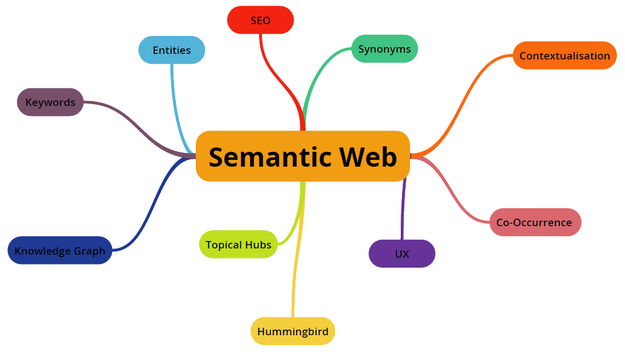The World Wide Web, the invention of Tim Berners-Lee in 1989, has been a phenomenal success.In just under 30 years, more than 3.81 billion people worldwide have used it, and the Web has grown more prominent over the years with a vast amount of information.
Fortunately, solutions exist to find relevant information in all this content.
Today, search engines, thanks to their crawlers, can recursively browse through the links of billions of web pages and index their content in massive databases. Thus a user performing a search will obtain a list of results classified in order of relevance corresponding to criteria specific to the search engine such as the frequency of keywords, density index, etc.
The solution: the Semantic Web!
The Semantic Web is a concept designed to enable machines to understand the meaning of information on the Web.
 The aim is thus to set up, in addition to the network of hyperlinks between traditional web pages, a network of links between structured data. Tim Berners-Lee, director of the W3C, coined the term. He oversees the development of Semantic Web standards proposals.
The aim is thus to set up, in addition to the network of hyperlinks between traditional web pages, a network of links between structured data. Tim Berners-Lee, director of the W3C, coined the term. He oversees the development of Semantic Web standards proposals.
Resource Description Framework (RDF)
Created in 1999, RDF is a data exchange format on the Web and is the primary language of the Semantic Web. RDF adopts a graph model whose objective is to describe resources on the Internet (Companies, Books, Articles, etc….).
Three characteristics define an RDF data:
- its subject: the address of the targeted resource
- its predicate: the property assigned to the targeted resource
- the object: the value related to the property of the targeted resource
Ontologies
In computer science, an ontology represents a structured set of terms and concepts representing the meaning of an information field. The purpose of ontologies is to express the world around us in such a way that it is understandable by a machine and then to be able to make deductions from it.
There are particular languages to create these ontologies. Among them, we have for example OWL (Web Ontology Language) which is a knowledge representation language built on RDF.
FOAF (Friend Of A Friend) is a project whose aim is to create a network of web documents that can be understood by machines describing individuals and the relationships between them. Without the need for a centralized directory, FOAF allows people to be linked to each other as if everything was described in a single database.
Thanks to these technologies, the machines will be able to understand questions like the one asked earlier.
Various Semantic Web applications:
Different application areas use the Semantic Web technologies.
In social networks where the Semantic Web makes it possible to increase search possibilities and connect members. For bibliographic/documentary classification, the semantic web is also present in companies to collect and analyze large volumes of data.
Even in the E-commerce industry, to describe in a structure the products, prices, and information related to the company, it allows search engines to exploit this essential data better to restore them in their search context.



